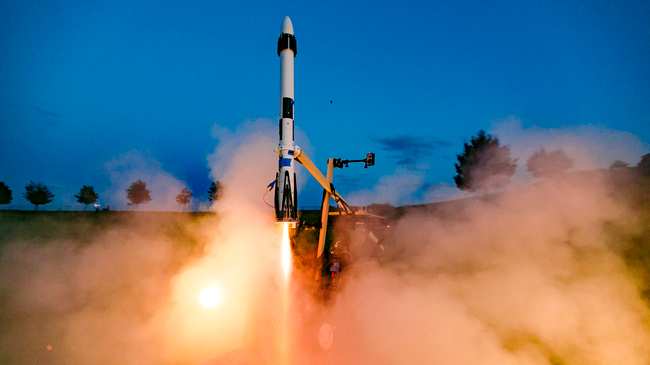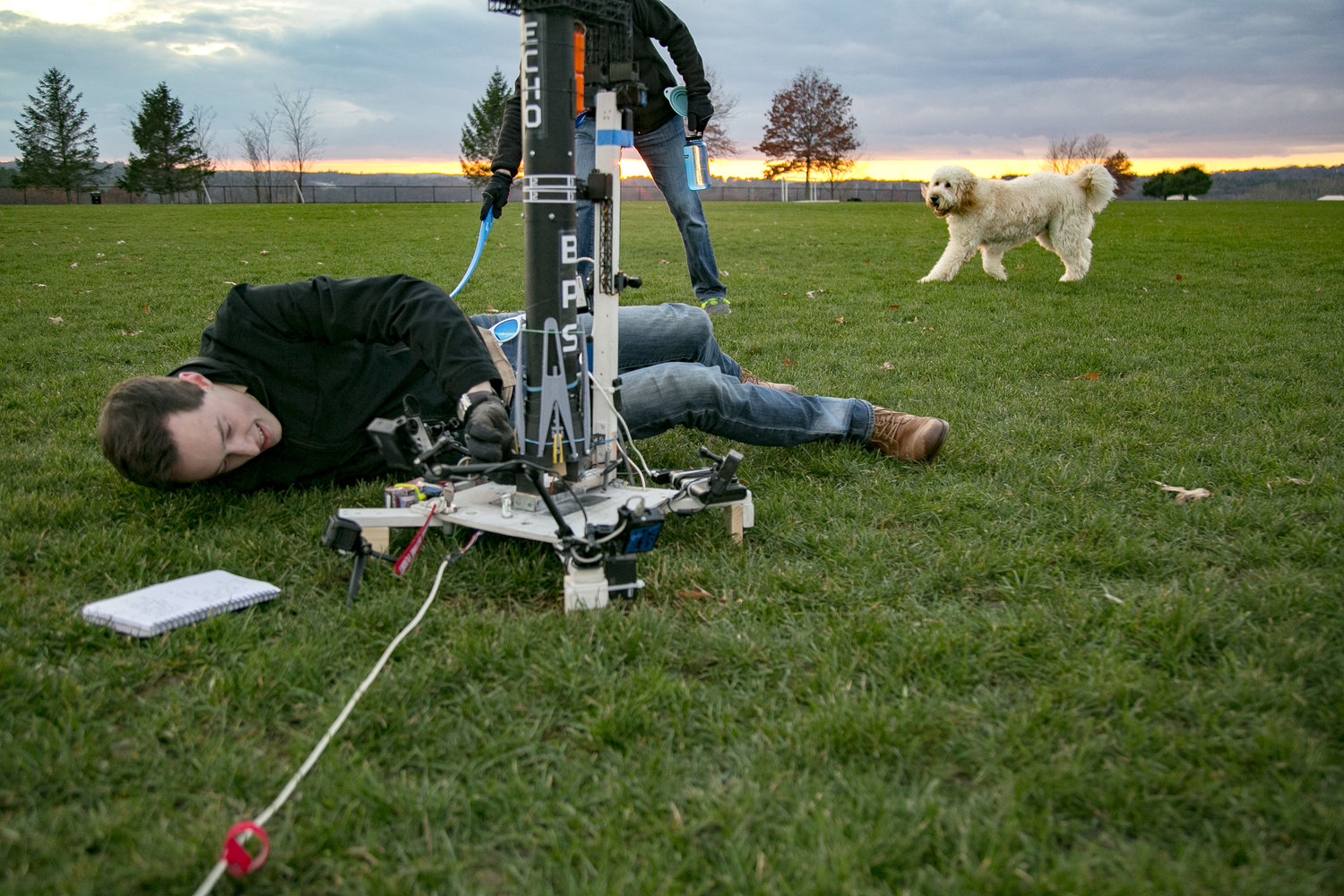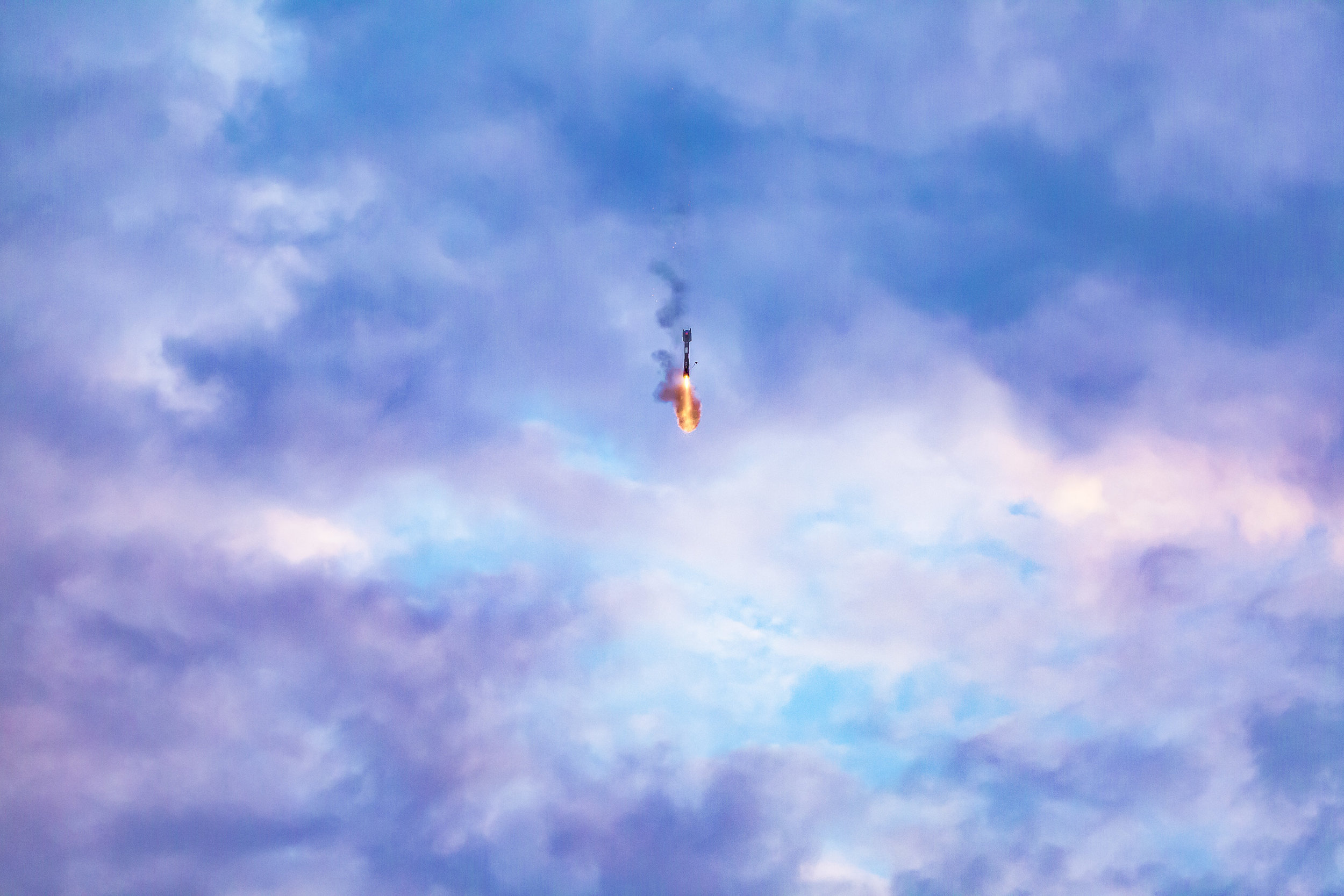
Image: Joe Barnard / BPS Space
To call Joe Barnard an “amateur” rocketeer is something of a misnomer.
As the founder of Barnard Propulsion Systems (BPS), a small business making flight hardware for other amateur rocketeers, the 25-year-old Nashville resident is working on cracking propulsive landings for model rockets. This is the same principle that allows SpaceX to land the first stage of its Falcon 9 rockets after boosting a payload to orbit, but it has never been demonstrated in hobby rocketry before.
The key to propulsive landings is thrust vectoring, which enables control over the direction of a rocket’s engines during flight to change its trajectory and stabilize the vehicle. Barnard is a pioneer in DIY thrust vectoring, and in the last few months he’s harnessed the technique to test self-landing model-scale rockets. As some of the most recent videos on his YouTube channel demonstrate, there are still a few kinks left to work out, but it’s pretty impressive what he’s managed to accomplish so far.
Although thrust vectoring has been used in the aerospace industry for nearly a century, it was a technology generally considered to be too complex and expensive for amateur use. Barnard wants to change that.
“There have been maybe five independent projects in the last ten years trying to incorporate thrust vectoring in their rockets,” Barnard told me on the phone. “Generally speaking it doesn’t go so well or it never gets to the point of flying. No one else has carried it through to the point where I’m at right now.”
Over the last three years, Barnard has managed to turn his rocketry hobby into a full-time gig. Watching videos of his rockets, which include scale replicas of SpaceX’s Falcon 9 and Rocket Lab’s Electron, it’s hard to believe he doesn’t come from a technical background.
A test flight of Barnard's SpaceX Falcon Heavy Replica. Image: Joe Barnard/BPS Space
Although Barnard’s father worked on rocket propulsion back in the 90s, Barnard attended Berklee College of Music and worked as a videographer after graduating. He said he became interested in the aerospace industry after watching videos of early SpaceX flights. His initial goal with starting BPS was to attract the attention of aerospace companies and eventually transition into the industry.
Read More: Inside BALLS, the Most Exclusive Amateur Rocketry Event in the World
“Aerospace is a really exciting industry and I decided that’s where I wanted to work, but I didn’t feel like I could afford to go back to school,” Barnard said. “I also learn better through teaching myself things so I bought a bunch of textbooks and got to work.”
When he first started out, Barnard was truly working from scratch. He had to teach himself not only the basics of rocketry, a complex mix of physics and chemistry, but also how to assemble hardware and write the software programs to control it. Barnard said the most difficult part was learning how to write the flight control software, which required him to learn programming languages like C++ and Swift.

“The hardest part is getting a flight computer to understand how to point itself in the right direction without wobbling around a bunch,” Barnard said. “This is a control problem that usually only super advanced aerospace engineers are doing to fly things to space. They have tons of computing power and resources, whereas I’m trying to make this happen basically using a glorified Arduino.”
Barnard’s early flight computers were prototyped using off-the-shelf components and Arduino microcontrollers, but these days his flight computers consist of customized printed circuit boards with parts that are optimized for their task. Earlier this year, he launched his second iteration of the BPS avionics system, Signal, which he sells in thrust vectoring kits for $350 each. The combined income from selling these hardware kits and the BPS Patreon allowed Barnard to quit doing videography work and begin working on BPS full-time last spring.
Perusing Barnard’s YouTube channel speaks volumes about how fast his homebrew thrust vectoring technology has progressed. Videos of his first rockets from 2015 are a compendium of failure, featuring more rockets sliding along the ground than flying through the air. Still, these early failures were invaluable learning experiences for Barnard and speak to the difficulty of the problem he is trying to solve.
Testing roll control for a Falcon Heavy replica. Image: Joe Barnard/BPS Space
“We didn’t have a single flight you could classify as successful for the first year and a few months,” Barnard told me. “I was dumping thousands of dollars into this and nothing was working, but I really wanted to work in aerospace and I had to demonstrate I knew what I was doing. It didn’t bother me that a lot of the early things failed pretty badly because it shows the progression.”
The thrust vectoring system now sold as a kit through BPS is limited to low and medium-powered amateur rockets. Most of Barnard’s test flights only fly a few hundred feet vertically because the thrust vectoring system can only handle about 40 Newtons of thrust. (For the sake of comparison, the latest version of the SpaceX Falcon 9 rocket produces about 7.6 million Newtons of thrust at liftoff.) Still, it lays the foundations for using rockets with more powerful motors in the future.
“BPS stands for ‘Barnard Propulsion Systems’ but the funny part is I build every part of the rocket except for the propulsion system,” Barnard told me. For his test rockets, Barnard currently uses readymade solid fuel rocket propellant, but hopes to transition to something with more power in the future. “I’m a horrible chemist, but if we could get enough funding I’d like to start working on rockets using liquid or hybrid engines at a sounding rocket scale. That requires a lot more capital though, so for now it’s just hobby motors.”

As for whether Barnard’s model-scale rocketry efforts have attracted the attention from the aerospace industry that he desires, he told me that several companies have reached out to him, but said he wasn’t able to disclose their names or the content of their conversations.
Now that he’s starting building a model rocket company of his own, Barnard says he wants to see it through to the finish.
“If I just can’t get this stuff to work in a few years, then I’d be totally happy calling it quits and going to work in the aerospace industry,” Barnard told me. “But for now I really like having this entrepreneurial endeavor and everything is trending toward it working out.”

